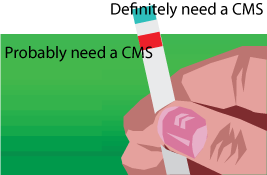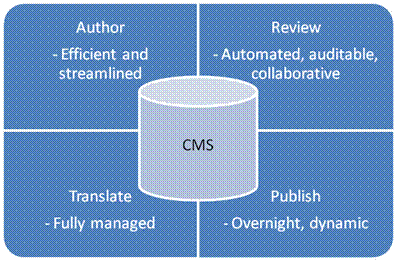 Executives, managers and content management workers (marketing, technical communications, public relations … anyone who works with a lot of content on a daily basis) often wonder if they really need a content management system (CMS). We recommend using this content management system litmus test to determine if your company could benefit from a (component) content management system. The test assumes that you have already moved to a structured authoring environment (your content is or will soon be in XML).
Executives, managers and content management workers (marketing, technical communications, public relations … anyone who works with a lot of content on a daily basis) often wonder if they really need a content management system (CMS). We recommend using this content management system litmus test to determine if your company could benefit from a (component) content management system. The test assumes that you have already moved to a structured authoring environment (your content is or will soon be in XML).
The ROI calculator helps you determine how long it would take for your investment to pay off, but on a more basic level, what’s the litmus test for deciding if your content is complex enough to require one?
There’s a fairly clear threshold for needing a CMS to manage your components.
Simply put: Do you have content chunked into components/topics that interrelate with each other? If so, then you need a CCMS.
You could probably benefit
If any of the following statements apply to you, then you could possibly benefit from purchasing a CMS.
- You publish more than one deliverable (user guide, online help, etc.).
- You re-use (or could re-use) content among a variety of deliverables.
- You keep (or should keep) an archived version of what was published for each release.
- You publish (or could publish) the same content for different audiences (UNIX v. Windows guides, for example).
- You have two or more authors who could benefit from content being organized centrally.
You could definitely benefit
If any of the following statements apply to you, then you could definitely benefit from purchasing a CMS.
- You have five or more authors who could benefit from content being organized centrally.
- Authors can’t find content that exists.
- No one knows what content exists.
- No one knows if content is up to date (can be trusted).
- You have multiple concurrent reviewers of the same content.
- You need an auditable trail of review comments and changes made (a formal record of who, when, and why a change is made).
- You translate content to one or more languages on an ongoing basis (multiple releases of source and translated content, not just one-off translation).
- You single source content between departments (publications and marketing or training, for example)
- You publish multiple deliverables across multiple product lines.
- You use DITA content references (conrefs or conkeyrefs) to single source between deliverables or within deliverables.
- You need to have metrics around content creation and management.
- You need to branch content (content that was one source needs to split to become two sources, each for its own purposes) and possibly merge back together again.
- You have other, complex requirements where a central “brain” organizing content, managing processes, and enforcing rules is essential.
Integrated Content Lifecycle, with CMS as “Brain”
Once you’ve taken the litmus test on your organization’s need for a CCMS, you need to prepare for convincing management, and then begin planning and executing your content management system initiative.
